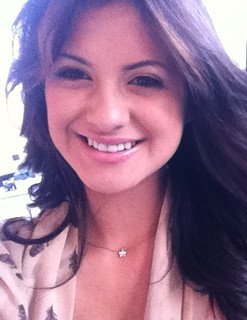Back in March of 2011, Dr. Ted Eytan from The Permanente Federation, came to Southern California for a 3 day visit to see how we cared for each patient using a Proactive Complete Care philosophy. After his visit, Ted sent our team a link to a blog he wrote about what he observed and what he heard. I was fascinated to see blogging used to tell a different kind of story. I had a personal blog outside of work that I used to keep me company on nights when I was plagued with chronic insomnia, but Ted's blog was a way to share successful practices, observations, and ideas with others who had a similar interest. In Ted's case, his blog is medical related, but with a focus on providing successful strategies to improve patient centered care. Giving the patient a voice and improving the care system in the process. When I followed the link to Ted's blog, it took me to our employer's internal sharing site called Ideabook. While in our Ideabook site, I found out that we had a Complete Care page hosted by my friend and Complete Care Physician Co-Lead, Timothy Ho, MD. After reading through the many blogs posted by Tim Ho and other contributors, I thought about the possibilities of what writing a Proactive Care blog from my perspective might do to help facilitate what I've learned with others across our region and, because my role had expanded to helping other KP regions implement and deploy our Proactive Care system, what it might do to help answer some of their questions. Without another thought, I took a leap and joined Ideabook myself. To be honest though, I was extremely intimidated by the thought of blogging for work. I mean, what if no one reads my blog? What if what I wrote didn't matter? I was plagued with "What if's..." so for a couple months, all I did was read the writings of others. Then, Ted Eytan invited me to attend a Health Innovations Summit in our Nation's Capital, Washington, D.C. Before I left the event Ted had convinced me that it was time to open a Twitter account and get working on my blog. In fact, I opened a Twitter account and tweeted the link to Ted that day and wrote my first blog on the plane ride home to California.
Since that time, I have written close to a 100 blog posts on our internal site. My writings are about the work that we do, the care that we deliver, the system's we use, and what I like to call "the heart of why we do what we do". I was worried at first that since my clinical experience is only through osmosis and not by profession that I would not be able to add value to a physician or nurse who read my blog. That's when I realized, my blog didn't have to be clinical because my blogging and Twitter doctor buddies, Tim Ho or Ted Eytan, could add a comment to my post to share the clinical side. What do I have to offer then? Well... to start with I have over 20 years of combined experience with Kaiser Permanente on both the Health Plan and Medical Group side. I determined that I would do something that I haven't seen as much in doctor blogs. I could share my vulnerabilities. Whenever I thought it would get the point across better, I would keep it real by adding my personal experiences to the topic. There are times when my blog posts are short and sweet, just sharing a brief article that I read, and there are posts that are technical and explain why an alert or care gap may be triggering the way it is. Sometimes there are rants about something that set me on fire and sometimes there is a piece of my soul that is opened up and poured out through key strokes with a hope that someone will be inspired to do the right thing.
Tim and I have had a couple of conversations about whether or not all of the time it takes to blog is actually worth it. Sometimes it feels like such a thankless task, especially when a blog post only gathers a couple of hits. Then there are other times when a post gets hundreds of hits. Go figure! He and I have developed a relationship of encouragement through blogging that, at least for me, has helped me see the world a little differently. Tim Ho is the master of analogies and story telling, which is funny because he doesn't believe that comment to be true. Ted Eytan has been my Twitter mentor. Re-tweeting and asking open ended questions that have helped me understand how to be a better tweeter. I also follow a few other blogs like Regina Holliday's Medical Advocacy Blog, who, without knowing it, has inspired me in different ways.
To Tim, Ted and all the others out there who have helped me become a better blogger and social media user/advocate, thank you.



